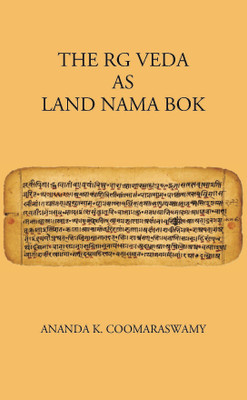THE R. G VEDA AS LAND NAMA BOK(Paperback, ANANDA K. COOMARASWAMY)
Quick Overview
Product Price Comparison
About the book:-The Rigveda or Rig Veda is an ancient Indian collection of Vedic Sanskrit hymns. It is one of the four sacred canonical texts (┼øruti) of Hinduism known as the Vedas. It is the oldest known Vedic Sanskrit text. In the Rg Veda, the Five Aryan kindreds are spoken of as immigrants; they have come from another place across the waters, and have settled and tilled the lands on the hither shore. This process of land-taking has generally been interpreted as referring to an historical immigration of an Aryan speaking people who, fair in colour and sharply distinguished from the dusky pagan Dasyus, crossed the Sarasvati in the Panjab and made their home in Bharatavarsa. That is a euhemeristic interpretation of a traditional literature which is strictly speaking devoid of any historical content whatever. We do not mean to say by this that there may not have taken place historical events analogous to those alluded to in the Vedic ŌĆ£mythsŌĆØ ; on the contrary, we assume that history is always enacted in the pattern of the ultimate reality enunciated in the metaphysical tradition, or in Biblical phraseology, "that it might be fulfilled which was spoken by the prophets. " In this sense, for example, we may be sure that the people who performed the Vedic ritual and chanted the mantras in their recorded form, actually possessed horses and chariots, had experience of the crossing of seas and rivers, and tilled the soil. The book is the product of extensive study of this subject which generates a good amount of interest among the readers. About the Author;-Ananda Kentish Muthu Coomaraswamy ( 1877 ŌłÆ 1947) was a Ceylonese Tamil metaphysician, pioneering historian and philosopher of Indian art who was an early interpreter of Indian culture to the West. In particular, he is described as "the groundbreaking theorist who was largely responsible for introducing ancient Indian art to the West. He made important contributions to the philosophy of art, literature, and religion. He


